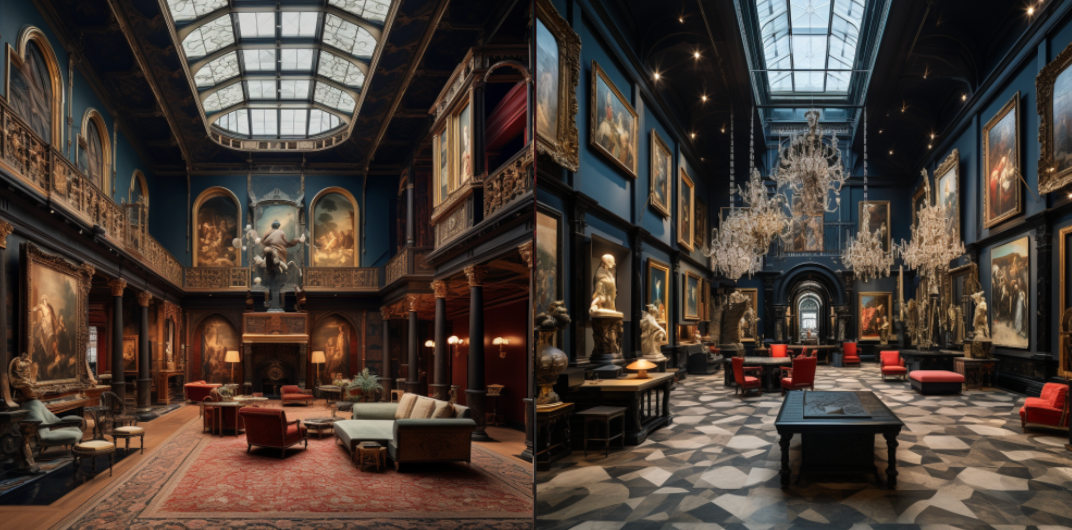In today's digital age, data has become a powerful tool that can reshape the strategies of various industries, including art organisations. The ability to gather, analyse and leverage data can provide invaluable insights, enhance audience engagement and drive success in the world of art. We'll explore how art organisations can unlock the power of data to reshape their strategies through a review of successful case studies from world-renowned institutions.
The Role of Data in Art Organisations
Art organisations, including museums, galleries and cultural institutions, have traditionally focused on curating and presenting art to the public. While this remains their core mission, data can complement and enhance their efforts in several ways:
-
Audience Insights: Data allows art organisations to better understand their audience's preferences, behaviours and demographics. With this information, they can tailor their exhibitions, events and marketing strategies to resonate with their target audience.
-
Collection Management: Managing an art collection is a complex task. Data can help art organisations track the condition, provenance and value of artworks. This enables better decision-making when it comes to acquisitions, deaccessions and conservation efforts.
-
Fundraising and Membership: Data can be used to identify potential donors and members, personalise fundraising campaigns and track donor engagement. This can significantly boost an art organisation's financial sustainability.
-
Marketing and Promotion: Data-driven marketing strategies can help art organisations reach the right people through the right channels. By analysing data on audience behaviour, organisations can refine their promotional efforts to maximise their impact.
-
Visitor Experience: Understanding how visitors navigate exhibitions and interact with art can improve the overall visitor experience. Data can be used to optimise the layout, lighting and interpretation of artworks within a gallery.
Case Studies
Let's look at a few case studies of art organisations that have successfully leveraged the power of data:
Case Study 1: The British Museum - Optimising Exhibition Layout
The British Museum, located in London, is renowned for its vast collection of art and historical artefacts. To enhance the visitor experience and engagement, the museum employed data analysis to optimise the layout and presentation of its exhibitions.
Strategy:
-
Data-Driven Visitor Flow Analysis: The museum collected data on visitor movement within the exhibitions. This data included visitor density at various points and popular viewing durations. This allowed them to identify bottlenecks and under-visited areas.
-
Dynamic Exhibit Rotations: Using the insights from the data, the museum introduced dynamic exhibit rotations. Popular or high-traffic areas were adjusted to accommodate more visitors, while under-visited areas were revitalised with new exhibits.
-
Visitor-Centric Interpretation: Data also revealed visitor preferences for interpretive materials. The museum tailored its interpretation, such as labels and multimedia guides, based on the feedback and behavioural patterns of visitors.
-
Feedback Loops: The British Museum encouraged visitor feedback and monitored visitor satisfaction post-implementation. This iterative approach allowed the museum to fine-tune the layout continuously.
Results:
-
Visitor engagement and satisfaction increased significantly, as visitors found the exhibitions more accessible and enjoyable.
-
The museum achieved a more even distribution of visitors throughout the exhibits, reducing congestion and enhancing the overall experience.
-
The data-driven approach enabled the British Museum to adapt quickly to changes in visitor preferences and trends, ensuring its exhibits remained fresh and appealing.
Case Study 2: Tate Britain - Personalised Fundraising Campaigns
Tate Britain, one of the leading art institutions in the UK, sought to maximise its fundraising efforts by personalising its campaigns using data-driven strategies.
Strategy:
-
Data Segmentation: Tate Britain segmented its donor database based on various factors, including previous donation history, engagement with the institution and demographic information.
-
Predictive Analytics: Utilising predictive analytics, the institution identified potential high-value donors. These donors were then targeted with tailored fundraising appeals.
-
Personalised Content: The fundraising appeals were customised with content and messaging designed to resonate with each donor segment. This personalisation extended to email marketing, printed materials and event invitations.
-
Monitoring and Feedback: Tate Britain tracked donor response rates, contributions and feedback on campaigns to continually refine their approach. They also conducted donor surveys to gauge satisfaction and gather suggestions.
Results:
-
Tate Britain witnessed a notable increase in donations and engagement from both existing and new donors.
-
The personalisation of fundraising appeals led to a higher response rate, with donors feeling more connected to the institution.
-
The use of data-driven predictive analytics allowed the institution to focus resources on donors with the highest potential, maximising fundraising efficiency.
Case Study 3: The National Gallery, London - Optimising Online Presence
The National Gallery, London, sought to improve its online presence and expand its global reach by employing data analytics.
Strategy:
-
Web Traffic Analysis: The National Gallery analysed web traffic data to identify popular online content, the geographical origin of website visitors and which online platforms were driving the most traffic.
-
Content Optimisation: Based on web traffic insights, the institution optimised its online content, ensuring that the most visited sections received updated and engaging materials.
-
Social Media Engagement: The data-driven approach also extended to social media. The institution identified peak posting times, content that resonated with the audience and the platforms that delivered the most engagement.
-
Global Expansion: With data insights, The National Gallery crafted a strategy to target audiences in regions with growing interest in their collection, tailoring content and advertising accordingly.
Results:
-
The National Gallery witnessed a substantial increase in online engagement, with longer average visit durations and reduced bounce rates.
-
The institution's global reach expanded significantly, with an increase in online visitors from previously underrepresented regions.
-
Data-driven content optimisation and social media strategies kept the audience engaged and fostered a sense of community among online visitors.
In all these cases, data was the driving force behind strategic decision-making, enabling these British art institutions to improve the visitor experience, fundraising efforts and online presence. The iterative nature of these data-driven strategies allowed them to adapt and evolve to meet the ever-changing demands and expectations of their audiences, both locally and globally.
Sonder Capital Limited, headquartered in London, is your strategic partner in the hospitality, leisure, retail, consumer and luxury goods sectors. With a commitment to excellence and innovation, we offer customised business strategies, comprehensive financial advisory services and harness cutting-edge technology to empower your success. Partner with us to unlock your business's full potential.

